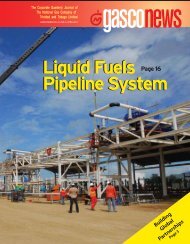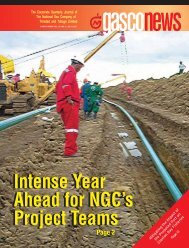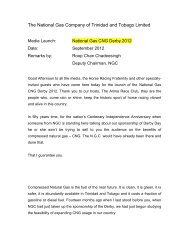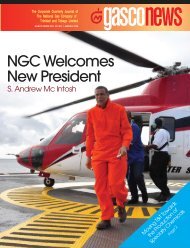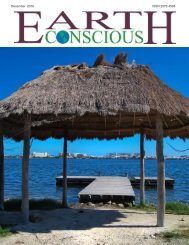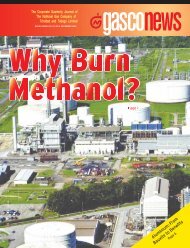June 2012 ISSN 2070-4593 - NGC
June 2012 ISSN 2070-4593 - NGC
June 2012 ISSN 2070-4593 - NGC
You also want an ePaper? Increase the reach of your titles
YUMPU automatically turns print PDFs into web optimized ePapers that Google loves.
a “greenhouse gas” and is one of the factors<br />
responsible for global warming. However,<br />
carbon dioxide is needed in our atmosphere<br />
to regulate our planet’s temperature. Without<br />
it we would be very cold and devoid of many<br />
of the organisms we know.<br />
It is estimated that about 3.5 billion years<br />
ago the sun’s energy has increased by 25% to<br />
30%. However, computer-generated climatic<br />
models suggest that such low solar radiation<br />
would produce a global temperature between<br />
-10 to -52 oC. Therefore if the temperature<br />
had to be maintained at the average global<br />
temperature of 15 oC as it is today, carbon<br />
dioxide levels had to be much higher in the<br />
past.<br />
Therefore some mechanism must have<br />
existed to remove this extra carbon dioxide<br />
from the atmosphere when solar radiation<br />
levels increased. This mechanism of removal<br />
was the conversion of carbon dioxide into<br />
fossil fuels such as oil, coal and natural gas.<br />
This has led to the question of how<br />
biodiversity on a whole influences the<br />
Gaia hypothesis, which has resulted in two<br />
schools of thought. The first is called the,<br />
“species redundancy” hypothesis proposed<br />
by Australian ecologist Brain Walker.<br />
This hypothesis proposed that most of the<br />
species in the ecosystem contributes very<br />
little to the overall stability of the ecosystem,<br />
so that only a few key species play a big role<br />
in ecosystem stability.<br />
The second hypothesis is the “rivet popper<br />
theory” proposed by Paul and Anne Ehrlich in<br />
the “rivet popper theory”, where although on<br />
a plane many rivets are present when one<br />
pops out other start to pop out. Therefore<br />
many other species are needed for these key<br />
species to be present. These other species<br />
may for example act as food or they may<br />
be predators that regulate populations of<br />
competitor species.<br />
So although this hypothesis was at first<br />
not widely accepted, it is now a component<br />
of many areas of Earth system and<br />
geophysiological sciences. However, the<br />
message it conveys is very important, which<br />
is both the biotic and abiotic are necessary<br />
for the equilibrium and maintenance of an<br />
environment capable of sustaining life.<br />
Jo-Anne Nina Sewlal (BSc., MPhil., FLS.,<br />
AMSB.) works at the Department of Life<br />
Sciences, University of the West Indies.<br />
<strong>June</strong> <strong>2012</strong> Earth Conscious 37



